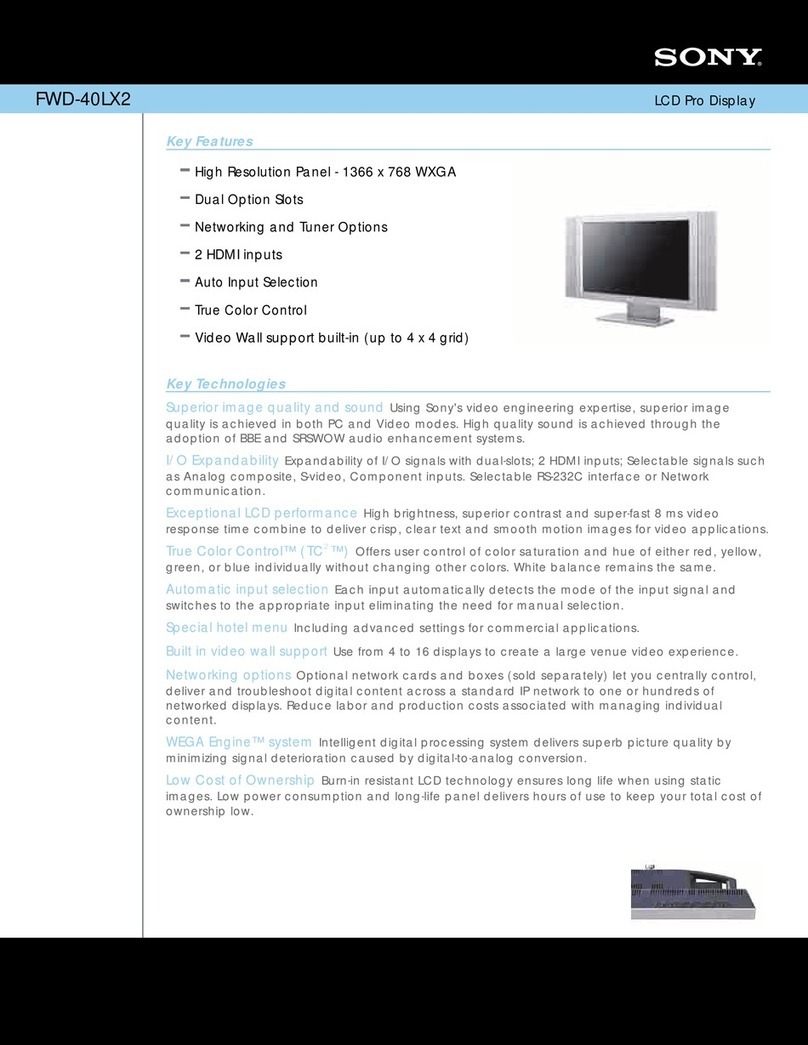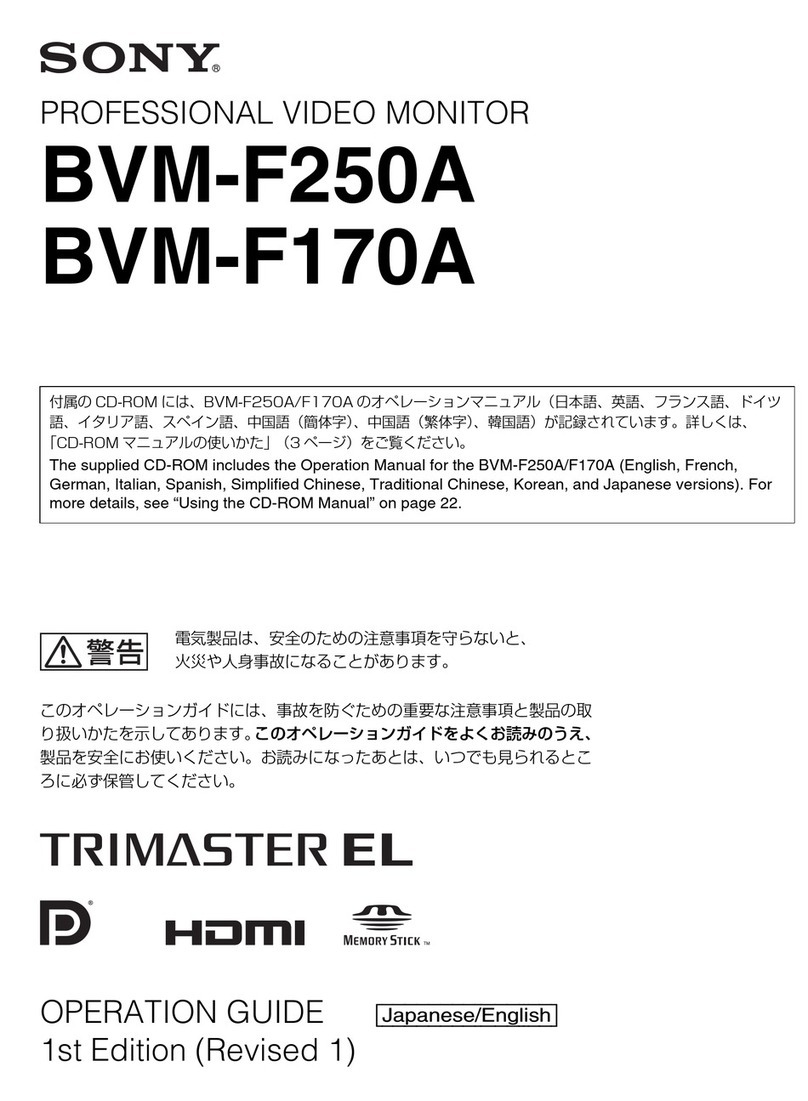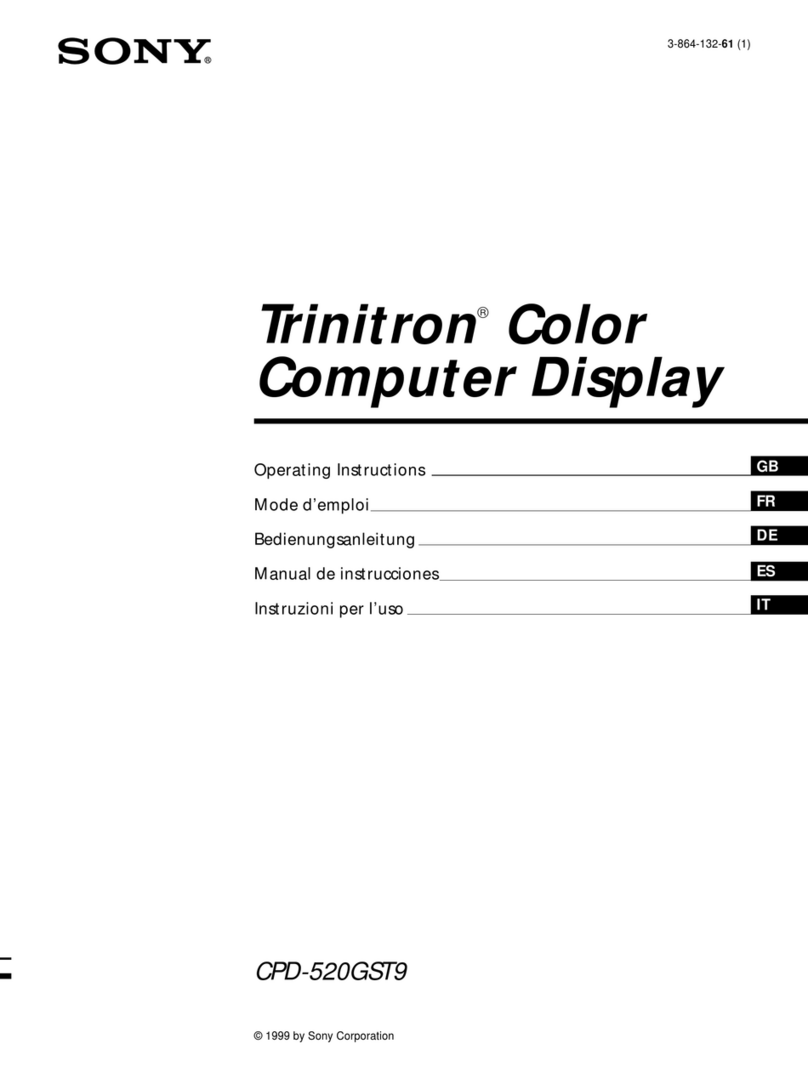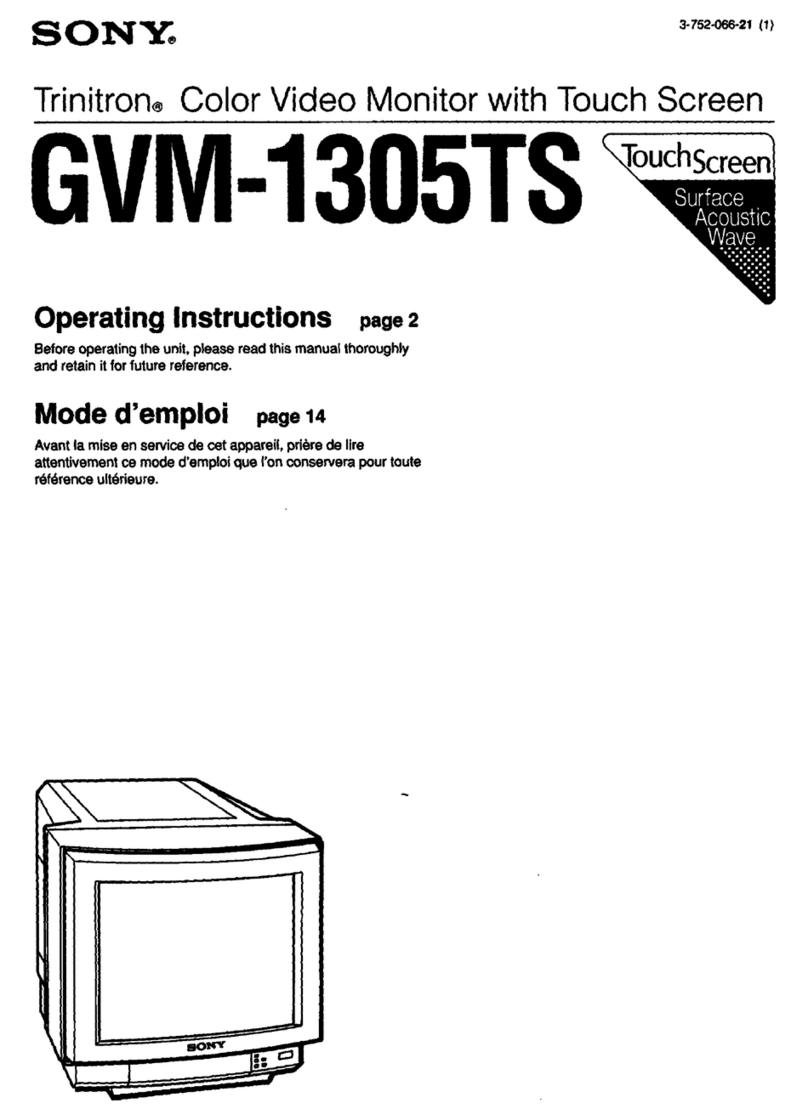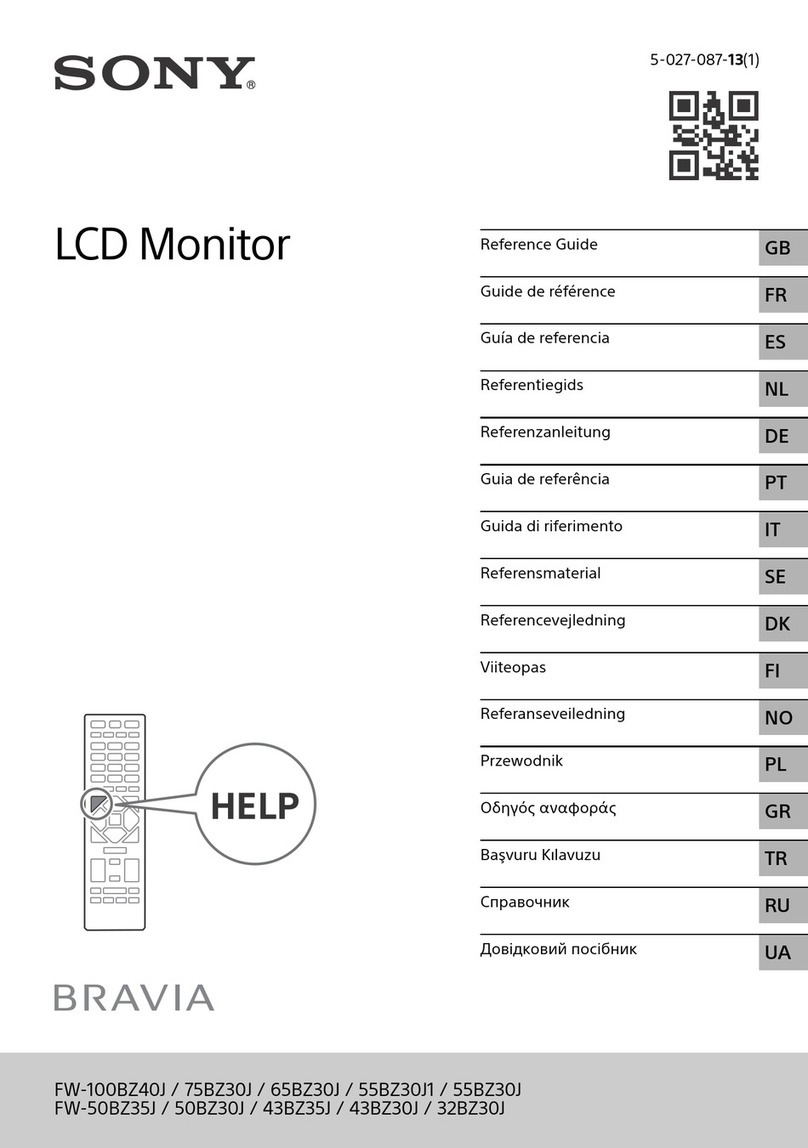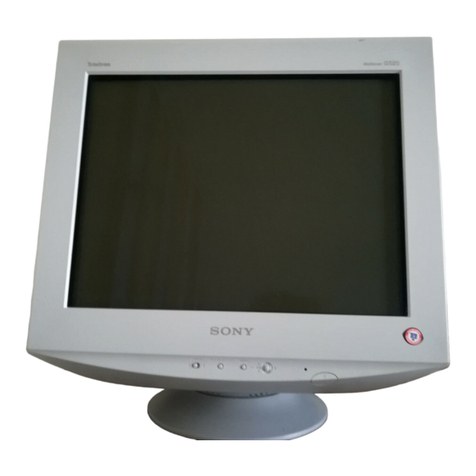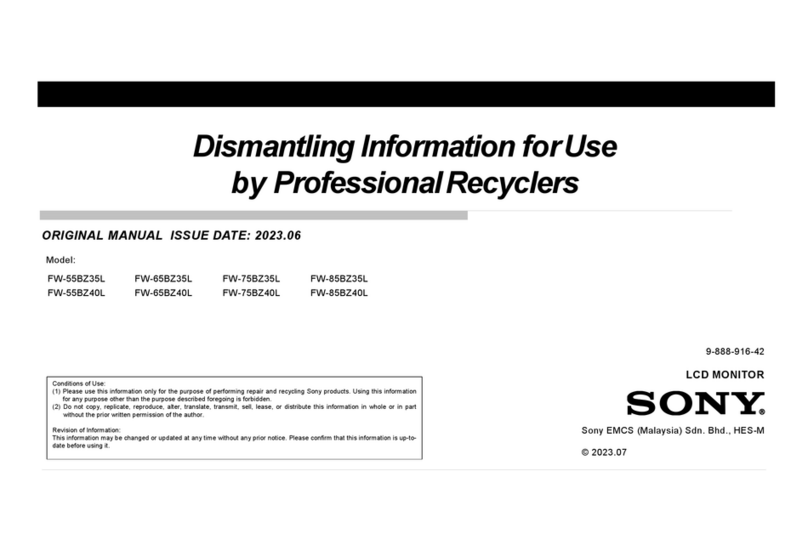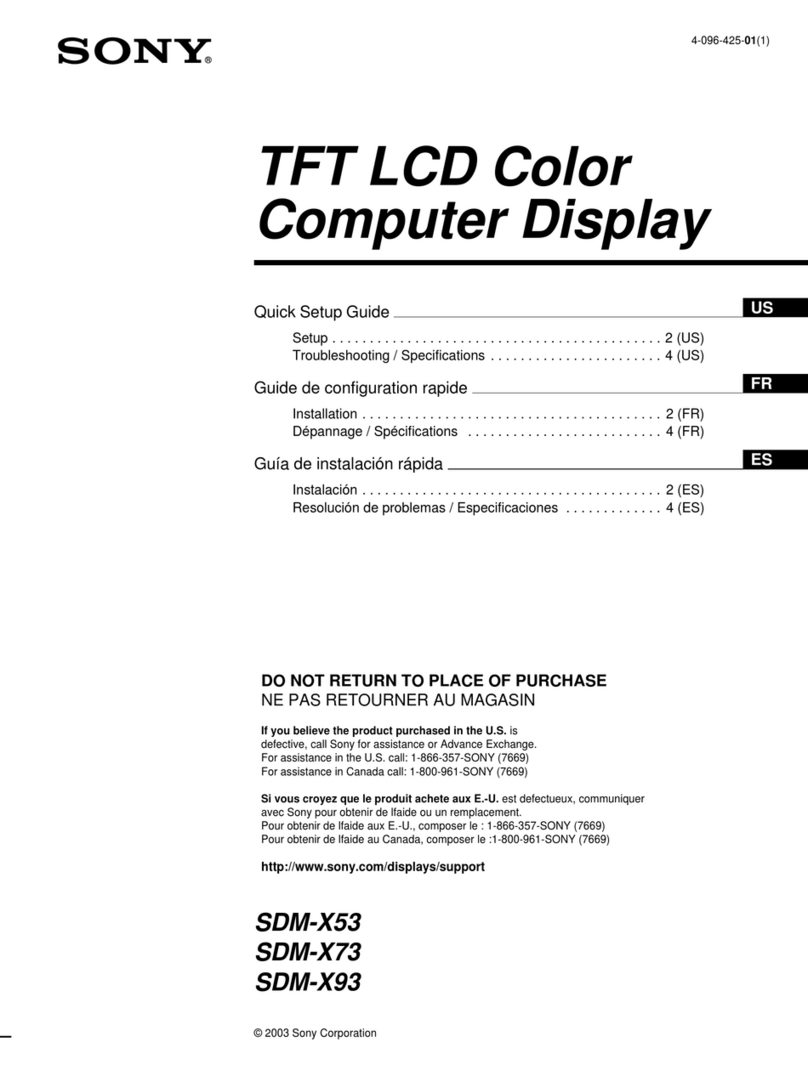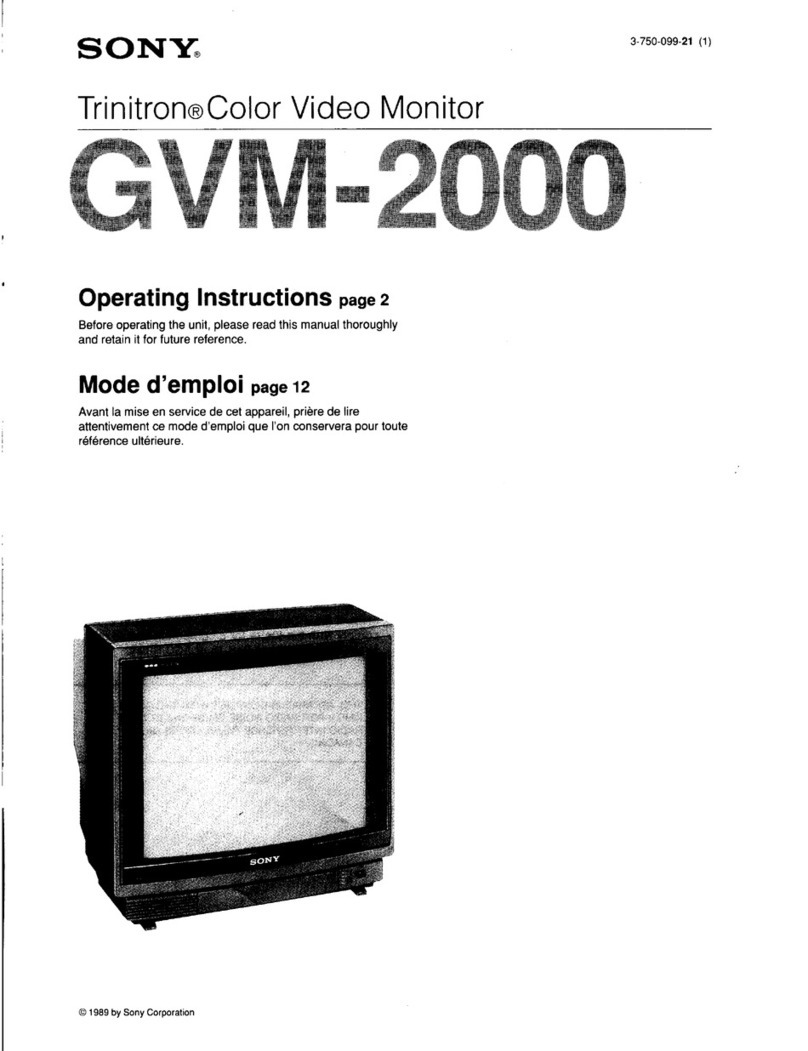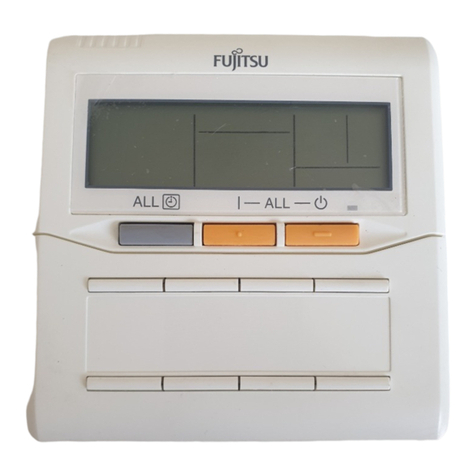
FWD-40LX2F
FWD-40LX2X
2 (P)
Notes on Wall Mounting
For Sony Dealers
Sufficient expertise is required for installing this product
on the wall. Be sure to read the instruction manual
provided with the Wall-Mount Bracket thoroughly to do
the installation work safely. Sony is not liable for any
damages or injury caused by mishandling or improper
installation.
Be sure to use the UL approved Wall-Mount Bracket
which is tested with FWD-40LX2F/40LX2X based on
IEC60950 and UL60950.
SONY is not liable for any damages or injury caused by
using any Wall-Mount Bracket which is not Approved by
UL.
Be sure to install the Display Unit securely to the wall
following the instructions given in the instruction manual
of the Wall-Mount Bracket.
If any of the screws are loose or fall out, the Display Unit
may fall and cause injury or property damage. Be sure to
use the appropriate screws for the material of the wall and
install the unit securely.
If the wall on which the Wall-Mount Bracket is installed is
unstable, uneven, or not perpendicular to the floor, the unit
may fall and cause injury or property damage.
The wall should be capable of supporting a weight of at
least four times the Display Unit weight, 104.0 kg. (The
Display Unit weight of FWD-40LX2F/40LX2X is
approximately 26.0 kg. )
Be sure to use the specified screws and attachment parts
properly following the instructions given in the instruction
manual of the Wall-Mount Bracket. If you use substitute
items, the Display Unit may fall, and cause bodily injury to
someone or damage to the Display Unit.
Be sure to assemble the bracket properly following the
instructed procedure explained in the instruction manual of
the Wall-Mount Bracket.
Be sure to tighten the screws securely in the designated
position.
If you fail to do so, the Display Unit may fall, and cause
bodily injury to someone or damage to the Display Unit.
Do not disassemble or make alterations to the parts of the
Wall-Mount Bracket.
If you do so, the Wall-Mount Bracket may fall and cause
injury or property damage.
Do not mount any equipment other than the specified
product.
If you mount equipment other than specified in the
instruction manual of the Wall-Mount Bracket, it may fall
or break, and cause injury or property damage.
Do not install the Display Unit over or under an air-
conditioner.
If the Display Unit is exposed to water leaks or air current
from an air-conditioner for a long time, it may cause a fire,
an electric shock or a malfunction of the Display Unit.
Do not allow the mains lead or the connecting cable to be
pinched.
If the mains lead or the connecting cable is pinched
between the unit and the wall or is bent or twisted by force,
the internal conductors may become exposed and cause a
short circuit or an electrical break. This may cause a fire or
an electric shock.
After proper installation of the Display Unit, secure the
cables properly.
If people or objects get tangled in the cables, this may
result in injury or damage to the Display Unit.
Be careful not to hurt your hands or fingers when installing
the Display Unit.





